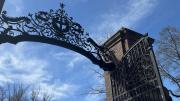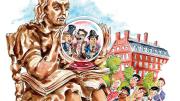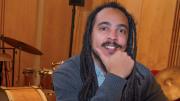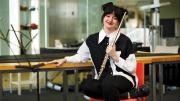In a column in the Chronicle of Higher Education (September 28), Kevin Carey asks whether Harvard--and by extension other research universities with both large colleges and large endowments--have under-invested in educating undergraduates during the past couple of decades. Carey is policy director of Education Sector, a Washington, D.C.-based policy-analysis organization; his Chronicle column is accessible via a link on his blog, the Quick and the Ed (see the September 28 entry).
"What happens when the gods of high finance dump a gigantic pile of gold on the richest university in the world?" Carey asks in his lead. He then notes the growth in the value of the Harvard endowment from $4.7 billion two decades ago (which he inflates to $7.7 billion in current dollars), and its rise to a peak value of $36.9 billion in 2008. The crux of his argument is that the spending from that growth supported the faculty ranks and the research enterprise, but not undergraduate education, or at least not sufficiently in his view:
Harvard spent the money on many things. But not a dollar went to increasing the number of undergraduates it chose to bless with a Harvard education. In 1990 the University welcomed slightly more than 1,600 students to its freshman class. In 2008, $32 billion later, it enrolled slightly more than 1,600 freshmen.
That is remarkable stinginess. Harvard undergraduate degrees are immensely valuable, conferring a lifetime of social capital and prestige. The university receives many more highly qualified applicants than it chooses to admit. Because the existing class includes underqualified children of legacies, rich people, politicians, celebrities, and others who benefit from the questionable Ivy League admissions process, Harvard could presumably increase the size of its entering class by, say, 50 percent while improving the overall academic quality of the students it admits.
Granted, it would cost money to teach more students. The University would need to invest in land and buildings and professors. But that's precisely what the University spent the endowment on. The Faculty of Arts and Sciences alone expanded by more than 125 positions over the past decade and increased spending by hundreds of millions of dollars. The University gobbled up nearby land and erected a collection of handsome new buildings, creating over six million square feet of new space since 2000 alone. Yet none of the brilliant new people and buildings and land were used to give more undergrads a Harvard education.
There are several arguments here. First, Harvard College historically has had a higher ratio of students to faculty members than its closest peers, and so the Faculty of Arts and Sciences has sought to increase the size of the professoriate, to enhance the quality of teaching. Second, throughout the community of leading universities, the strong growth of federal funding for biomedical research during the 1990s led to a surge of investment in laboratories and associated facilities, part of a wider effort to tap genomics and other promising technologies to make fundamental discoveries concerning the nature of life and health. Third, most of the principal research universities have increased their financial aid significantly this decade, in part to attract and support lower-income students, who have been underrepresented--in many cases, grossly so--in their undergraduate bodies. Carey makes note of the financial-aid programs, but criticizes them as largely a public-relations fig leaf--particularly given the value of universities' most valuable currency: admissions.
Other institutions, with different aims and resources, have set about to enlarge their undergraduate student bodies. Princeton has done so, to the tune of 10 percent; Yale began fundraising to build two new residential colleges (as Houses are called in New Haven), and to increase its student ranks by 800, or about 15 percent; that project--the buildings, and the required staffing-up to support and educate the incremental students--is on hold in current financial circumstances. Stanford, too, has talked about increasing enrollment, in light of the steadily swelling pool of applicants (and their ever-increasing qualifications). As they become more global, all these institutions would also like to be able to accept more of the international applicants who increasingly seek the top tier of undergraduate education.
Carey's most-purple prose aside, he raises a question that Harvard has thus far chosen to address in one way, but that it might be asked--by a society feeling poorer, and more anxious about attaining the benefits of excellent education--to address in another. The urgency surrounding such issues may only rise, given the severe financial crises afflicting the flagship public research universities (as outlined in a September 27 Washington Post op-ed by the University of California at Berkeley's chancellor, Robert J. Birgenea, and vice chancellor, Frank D. Yeary); the top 10 public universities educate more than six times as many undergraduates as the Ivy League institutions do.
Harvard's answer will, as always, necessarily balance the present and the future, the demands of research and of teaching, its current and prospective resources. But answering the question well will, as alway, be a useful and clarifying exercise. It is worth knowing that the question is out there.








